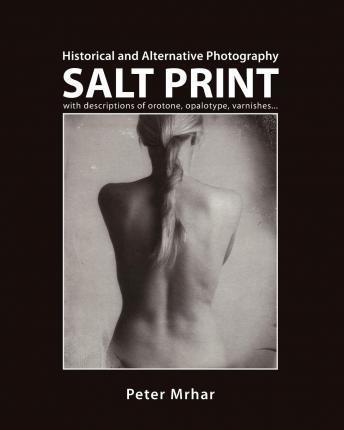Salt Print with descriptions of orotone, opalotype, varnishes...: Historical and Alternative Photography

Salt Print with descriptions of orotone, opalotype, varnishes...: Historical and Alternative Photography
The book Salt print is the third book in a series of books about historical and alternative photography. In it, the reader will learn the basic techniques of salted, albumenized, arrowroot, and matte paper. The author presents not only basic knowledge, as in all of his books, but further extends it with descriptions of other old, wonderful processes that are hard to find in other contemporary texts on this topic. Thus, he takes us into the forgotten world of printing on glass, where the reader will learn through very understandable descriptions the manufacturing process of once extremely popular opalotypes (printing on translucent white glass), and as a finale, the author explains one of the most beautiful of these almost forgotten techniques, the art of manufacturing orotones (photos printed on gilded glass), which, at the time of publication of this book, is mastered by only a few people in the world. The author also describes other salt print techniques, such as how to produce photos with the once very popular technique of printing on colored paper; how to manually color photos; or even how to develop salted prints with the help of both the earliest and most modern developers. Toning of salted prints is, of course, quite extensively described in this Salt print book, with descriptions of the once most commonly used toners. The author has also not forgotten to include a short description of the use of modern digital negatives. After the whole process of making the many kinds of salt prints has been described, the book closes with a description of the last step: the production and use of varnishes and waxes, which are used to preserve a photograph in time and to give to it a final, refined appearance.
PRP: 219.48 Lei
Acesta este Prețul Recomandat de Producător. Prețul de vânzare al produsului este afișat mai jos.
197.53Lei
197.53Lei
219.48 LeiLivrare in 2-4 saptamani
Descrierea produsului
The book Salt print is the third book in a series of books about historical and alternative photography. In it, the reader will learn the basic techniques of salted, albumenized, arrowroot, and matte paper. The author presents not only basic knowledge, as in all of his books, but further extends it with descriptions of other old, wonderful processes that are hard to find in other contemporary texts on this topic. Thus, he takes us into the forgotten world of printing on glass, where the reader will learn through very understandable descriptions the manufacturing process of once extremely popular opalotypes (printing on translucent white glass), and as a finale, the author explains one of the most beautiful of these almost forgotten techniques, the art of manufacturing orotones (photos printed on gilded glass), which, at the time of publication of this book, is mastered by only a few people in the world. The author also describes other salt print techniques, such as how to produce photos with the once very popular technique of printing on colored paper; how to manually color photos; or even how to develop salted prints with the help of both the earliest and most modern developers. Toning of salted prints is, of course, quite extensively described in this Salt print book, with descriptions of the once most commonly used toners. The author has also not forgotten to include a short description of the use of modern digital negatives. After the whole process of making the many kinds of salt prints has been described, the book closes with a description of the last step: the production and use of varnishes and waxes, which are used to preserve a photograph in time and to give to it a final, refined appearance.
Detaliile produsului









